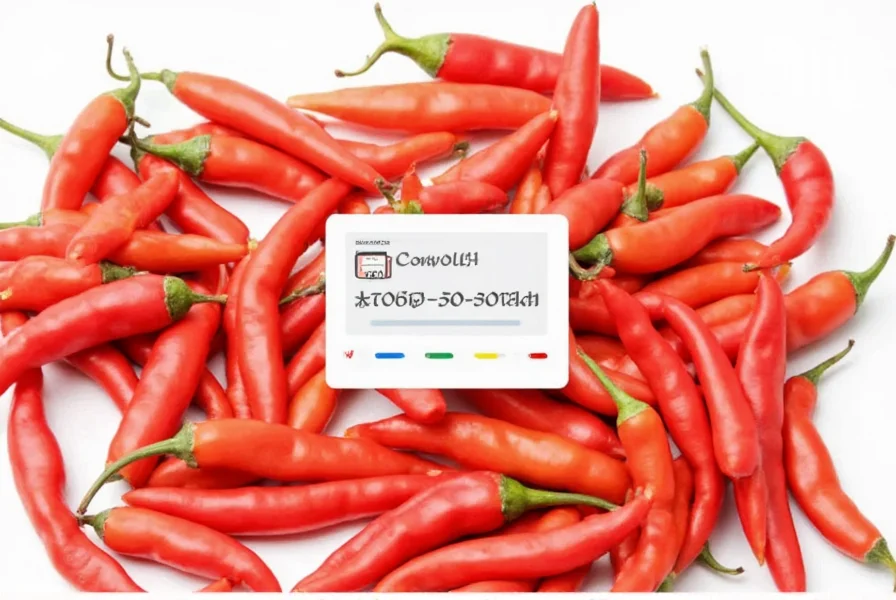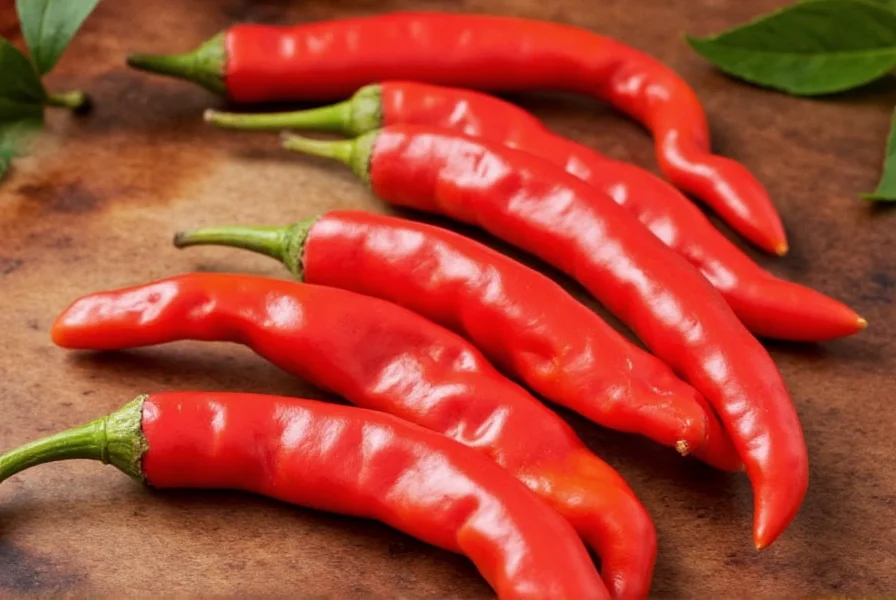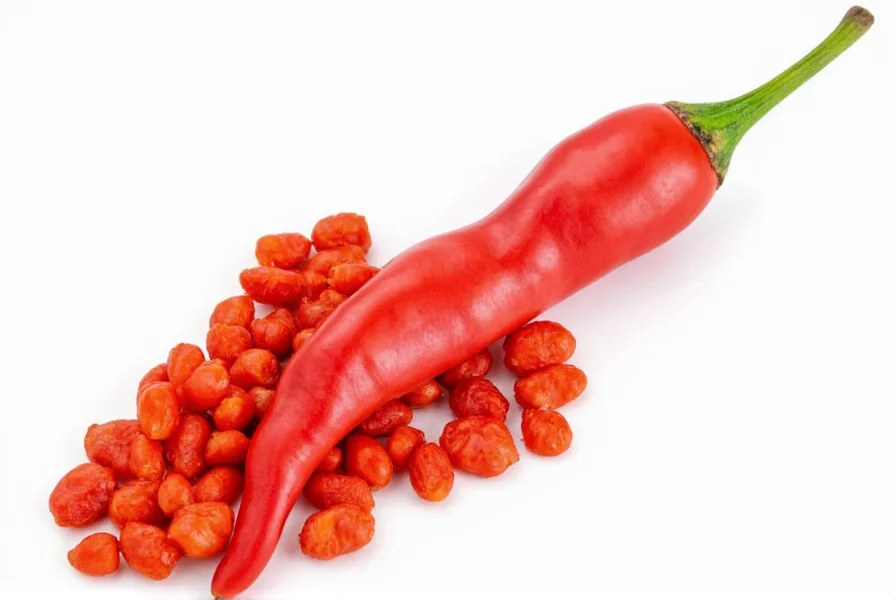Cayenne pepper's fiery reputation isn't just culinary folklore—it's scientifically proven heat that demands respect in the kitchen. Understanding exactly how spicy cayenne pepper is requires examining both its chemical composition and how it compares to other peppers you might have in your spice cabinet.
The Science Behind Cayenne Pepper's Heat
The spiciness in cayenne pepper comes primarily from capsaicin, a chemical compound concentrated in the pepper's placenta (the white ribs inside) and seeds. When capsaicin contacts your tongue, it triggers TRPV1 receptors—nerve endings designed to detect heat and potential tissue damage. Your brain interprets this as actual burning, even though no physical damage occurs.
Interestingly, cayenne peppers contain multiple capsaicinoids, with capsaicin being the most abundant (about 50-60% of total capsaicinoids). Other compounds like dihydrocapsaicin contribute to the complex heat profile that makes cayenne's spiciness both intense and somewhat lingering.
Measuring the Fire: Scoville Scale Explained
The Scoville scale quantifies pepper heat by measuring capsaicin concentration. Here's where cayenne pepper stands among common varieties:
| Pepper Variety | Scoville Heat Units (SHU) | Heat Comparison to Cayenne |
|---|---|---|
| Bell Pepper | 0 SHU | Not spicy at all |
| Jalapeño | 2,500-8,000 SHU | 4-12x milder than cayenne |
| Cayenne Pepper | 30,000-50,000 SHU | Baseline for comparison |
| Habanero | 100,000-350,000 SHU | 2-10x hotter than cayenne |
| Ghost Pepper | 855,000-1,041,427 SHU | 17-35x hotter than cayenne |
When comparing cayenne pepper spiciness to jalapeños, you'll notice cayenne typically delivers 4-12 times more heat. This explains why recipes often call for much smaller quantities of cayenne compared to fresh jalapeños.
Factors That Influence Cayenne's Heat Level
Several elements affect how spicy your cayenne pepper will be:
- Growing conditions: Soil quality, climate, and water stress can increase capsaicin production
- Maturity: Fully ripe red cayenne peppers tend to be hotter than younger green varieties
- Preparation method: Dried cayenne powder concentrates the heat compared to fresh peppers
- Plant variety: Different cultivars exist with varying heat levels
When is cayenne pepper spicier than red pepper flakes? Most commercial red pepper flakes contain a blend of peppers, often including cayenne but diluted with milder varieties. Pure cayenne powder typically delivers more consistent and intense heat than generic red pepper flakes.
Managing Cayenne Pepper's Intense Heat
Working with cayenne requires some strategy to control its powerful kick:

- Always start with small amounts—you can add more heat, but you can't remove it
- Remove seeds and white membranes for slightly milder results (these contain the highest capsaicin concentration)
- Balance heat with dairy (milk, yogurt, cheese) which contains casein that binds to capsaicin
- Counteract with sweetness (honey, sugar) or acidity (lemon juice, vinegar)
- Wear gloves when handling fresh cayenne to avoid skin irritation
Why Use Cayenne Despite the Heat?
Many cooks wonder does cayenne pepper taste spicy beyond just heat, and the answer reveals why it's so valued. Beyond the burn, cayenne offers:
- A bright, slightly fruity undertone
- Earthy, smoky notes (especially in dried form)
- Complex flavor that enhances rather than overwhelms dishes
- Metabolism-boosting properties (studies suggest capsaicin increases calorie burn)
Chefs appreciate cayenne's ability to add both heat and depth to sauces, stews, and spice blends. Unlike some extremely hot peppers that sacrifice flavor for heat, cayenne delivers a balanced profile that enhances rather than dominates dishes.
Safety Considerations with Cayenne Pepper
While generally safe for consumption, cayenne's intensity requires some precautions:
- Avoid touching your face after handling—capsaicin can cause severe eye irritation
- Use ventilation when cooking with large amounts to prevent respiratory discomfort
- Those with gastrointestinal sensitivities should use sparingly as it may trigger heartburn
- Never apply directly to skin as a home remedy without proper dilution

Conclusion: Understanding Cayenne's Place in the Pepper Spectrum
When evaluating how hot is cayenne pepper on Scoville scale, it occupies a significant middle ground in the chili pepper world—substantially hotter than everyday peppers but far from the extreme heat of specialty varieties. This makes it versatile for home cooks seeking noticeable heat without venturing into painfully hot territory.
Whether you're wondering is cayenne pepper spicy compared to other peppers or considering how to incorporate it into your cooking, understanding its precise heat level helps you use this powerful ingredient effectively. By respecting its potency while appreciating its flavor complexity, you can harness cayenne's heat to elevate dishes rather than overwhelm them.
Frequently Asked Questions
How much cayenne pepper equals one jalapeño in heat?
Approximately 1/8 to 1/4 teaspoon of cayenne pepper powder equals the heat of one medium jalapeño. Since cayenne is 4-12 times hotter than jalapeños, you need significantly less cayenne to achieve similar heat levels.
Does cooking reduce cayenne pepper's spiciness?
Cooking doesn't eliminate capsaicin (the compound that makes cayenne spicy), but it does distribute the heat more evenly throughout the dish. The perceived spiciness may mellow slightly as flavors blend, but the actual capsaicin content remains stable through normal cooking temperatures.
Why does milk help with cayenne pepper heat?
Milk contains casein, a protein that binds to capsaicin molecules and helps wash them away from TRPV1 receptors on your tongue. The fat content in whole milk makes it particularly effective at dissolving the fat-soluble capsaicin, providing faster relief than water, which actually spreads the capsaicin around your mouth.
Is cayenne pepper spicier than chili powder?
Generally yes—pure cayenne pepper is significantly hotter than standard chili powder, which typically contains a blend of milder peppers, cumin, garlic powder, and other spices that dilute the heat. One teaspoon of cayenne pepper often equals the heat of 2-3 teaspoons of regular chili powder.
Can you build tolerance to cayenne pepper's heat?
Yes, regular consumption of capsaicin-containing foods like cayenne pepper can gradually desensitize your TRPV1 receptors, allowing you to tolerate more heat over time. This process, called 'capsaicin desensitization,' occurs as repeated exposure temporarily depletes substance P (the neurotransmitter that signals pain from capsaicin).











 浙公网安备
33010002000092号
浙公网安备
33010002000092号 浙B2-20120091-4
浙B2-20120091-4